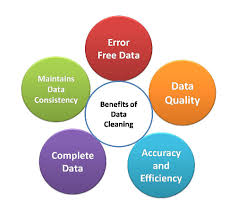Pandas vs Numpy speed| Which One Comes Out Ahead| 8 benefits

When comparing Pandas vs Numpy, in most data analytics projects, these libraries complement each other. NumPy provides the numerical backbone, while Pandas simplifies data handling and analysis. Rather than one being better than the other, they are often used together to perform comprehensive data analysis tasks efficiently. Choosing between them depends on your specific needs and the nature of your data analysis project.
Pandas and NumPy are essential tools in data analytics, each with its own unique strengths. Pandas excels in managing structured data and offers advanced data manipulation capabilities, while NumPy focuses on efficient numerical operations. Data analysts often use them together to leverage their complementary features, enhancing data analysis efficiency and effectiveness. Understanding when to use each library is crucial for successful data analytics.
Pandas vs NumPy: Which Library is Better for Data Analytics?

Pandas and NumPy are two widely used Python libraries for data analytics, but they serve different purposes and are often used together rather than compared as alternatives.
Pandas and NumPy are two essential Python libraries for data analytics, but they serve different purposes and are often used in conjunction.
- NumPy (Numerical Python): NumPy is primarily focused on numerical and array operations. It provides support for multi-dimensional arrays and a wide range of mathematical functions, making it efficient for numerical computations. It’s the foundation for many other data science libraries and is especially useful for tasks like matrix operations and numerical calculations.
- Pandas: Pandas, on the other hand, are designed for data manipulation and analysis. It introduces data structures like DataFrames and Series, which are ideal for handling structured data, such as CSV files and databases. Pandas excels in data cleaning, filtering, aggregation, and exploration, making it a valuable tool for data wrangling and analysis.
Let’s take a closer look at each library compared to Pandas vs Numpy and its role in data analytics.
NumPy is a fundamental library for scientific computing in Python. It provides support for large, multi-dimensional arrays and matrices, along with a collection of mathematical functions to operate on these arrays efficiently. NumPy is designed for numerical computations and provides low-level functionality, making it efficient and suitable for handling large datasets.
On the other hand, Pandas is built on top of NumPy and provides high-level data manipulation tools specifically designed for data analysis. It introduces two primary data structures: series (one-dimensional labeled array) and dataframe (two-dimensional labeled data structure). Pandas offers a wide range of data manipulation, cleaning, and analysis capabilities, including indexing, merging, reshaping, and time series analysis. It also integrates well with other libraries for visualization and statistical analysis.
Compared to pandas vs numpy, NumPy provides the fundamental building blocks for numerical computations, while Pandas offers a higher-level interface for data manipulation and analysis. Both libraries are widely used in the data analytics ecosystem and are complementary rather than competing choices.
In practice, you would typically use NumPy for numerical computations and operations on arrays, such as mathematical calculations or linear algebra. Pandas, on the other hand, is well-suited for data preprocessing, data cleaning, exploratory data analysis, and data manipulation tasks, thanks to its powerful data structures and intuitive API.
Therefore, instead of choosing between Pandas and NumPy, it is common to use them together. Pandas leverages NumPy arrays as underlying data structures, allowing you to perform efficient computations on the data while providing additional functionality for data manipulation and analysis.
In conclusion, compared to Pandas vs Numpy, if you’re working with data analytics in Python, it is highly recommended to have a good understanding of both NumPy and Pandas, as they are essential tools in the data science toolkit.
NumPy (Numerical Python) is a fundamental Python library that plays a crucial role in data analytics, providing a wide array of benefits for efficient numerical operations and data manipulation.
1. First and foremost, the benefits of comparing Pandas vs Numpy: NumPy excels in efficient numerical operations. It offers highly optimized, vectorized operations on arrays, making it significantly faster than traditional Python lists for numerical calculations. This efficiency is particularly valuable when working with large datasets and complex mathematical operations.
2. One of NumPy’s standout features is its support for multi-dimensional arrays. These arrays are essential for representing and manipulating structured data efficiently. With NumPy’s n-dimensional arrays, you can handle data in the form of matrices, tables, and higher-dimensional structures, making it suitable for a wide range of data analytics tasks. These arrays provide the foundation for organizing and processing data.
3. NumPy also simplifies the process of performing mathematical and statistical operations. Its wide range of mathematical functions includes basic arithmetic operations, trigonometric functions, logarithmic functions, and linear algebra operations, among others. These functions are optimized for performance, enabling you to apply them to entire arrays or specific elements simultaneously. This not only saves time but also reduces the need for explicit looping compared to Pandas vs Numpy.
4. Integration with other data analytics libraries is seamless. NumPy serves as the backbone for many Python packages and plays a central role in the data analytics ecosystem. It easily interfaces with libraries like Pandas, SciPy, and Matplotlib, creating a powerful toolset for data analysis, scientific computing, and data visualization. This interoperability simplifies data exchange between different tools and enhances their collective capabilities.
5. NumPy also optimizes memory management. Its use of contiguous memory blocks reduces memory overhead, making it possible to work with large datasets without memory constraints. Efficient memory handling is crucial for data analytics, where large volumes of data are commonplace.
6. Compared to Pandas vs Numpy, the NumPy library is open-source and boasts a robust and active community. This means extensive documentation, tutorials, and support are readily available, making it accessible for users of all levels. Cross-platform compatibility ensures that NumPy can be used on different operating systems, facilitating code sharing and collaboration across various platforms.
7. NumPy also provides data persistence methods, enabling you to save and load array data to and from files. This feature simplifies data storage and retrieval, making it convenient for various data analytics tasks.
8. In data analytics, NumPy is indispensable for data analysis and preprocessing. It facilitates data cleaning, transformation, and feature engineering, expediting the preparation of data for modeling and analysis. Its role in these early stages of data analytics is vital for producing high-quality results.
In summary, compared to Pandas vs Numpy, NumPy is a versatile and efficient library for data analytics, offering an extensive range of capabilities for numerical operations, data manipulation, and integration with other data analytics tools. Its memory management, open-source nature, and community support make it a valuable asset for professionals and scientists in the field of data analytics.
(8) Benefits of Using Pandas for Data Analytics

Pandas, the open-source Python library, is a fundamental tool for data analytics and data science, offering a multitude of benefits to data professionals when comparing Pandas vs Numpy
1. At the core of Pandas are its powerful data structures, DataFrames, and Series, which excel at organizing and analyzing structured data. Dataframes are akin to database tables, providing an intuitive way to store and manipulate data with labeled rows and columns. Series, on the other hand, simplifies working with one-dimensional data.
2. Pandas shines in data cleaning and preprocessing tasks, providing an extensive suite of tools. It effortlessly handles missing data, duplicates, outliers, and data transformations, ensuring your data is primed for analysis by addressing common data quality issues.
3. Data integration and merging become seamless with Pandas, thanks to its flexible methods for combining and joining datasets. You can effortlessly integrate data from various sources, perform database-style joins, and concatenate datasets, enabling the creation of comprehensive analytical datasets.
4. Data exploration and manipulation are made easy with Pandas’ wide array of functions. Slicing, indexing, filtering, and reshaping data are straightforward tasks. You can calculate summary statistics, apply custom functions, and pivot data to suit your analytical needs.
5. Pandas leverages the efficiency of NumPy for optimized data operations. Vectorized operations allow for applying functions to entire columns or rows without loops, resulting in faster execution. Additionally, Pandas optimizes memory usage, ensuring efficient storage and retrieval of data.
6. For time series analysis, Pandas offers specialized tools and functions. It provides DateTimeIndex and time-related functions for tasks like resampling, time shifting, and window calculations, making it an excellent choice for working with time-based data.
7. Pandas seamlessly integrates with other Python libraries such as NumPy, matplotlib, and sci-kit-learn, enabling smooth data exchange and transformation for comprehensive data analysis. Moreover, Pandas provides built-in data visualization capabilities through its integration with Matplotlib, allowing for easy creation of various plots directly from Pandas DataFrames.
8. Lastly, Pandas supports data reading and writing in multiple file formats, simplifying data acquisition, transformation, and storage, and streamlining the data workflow.






